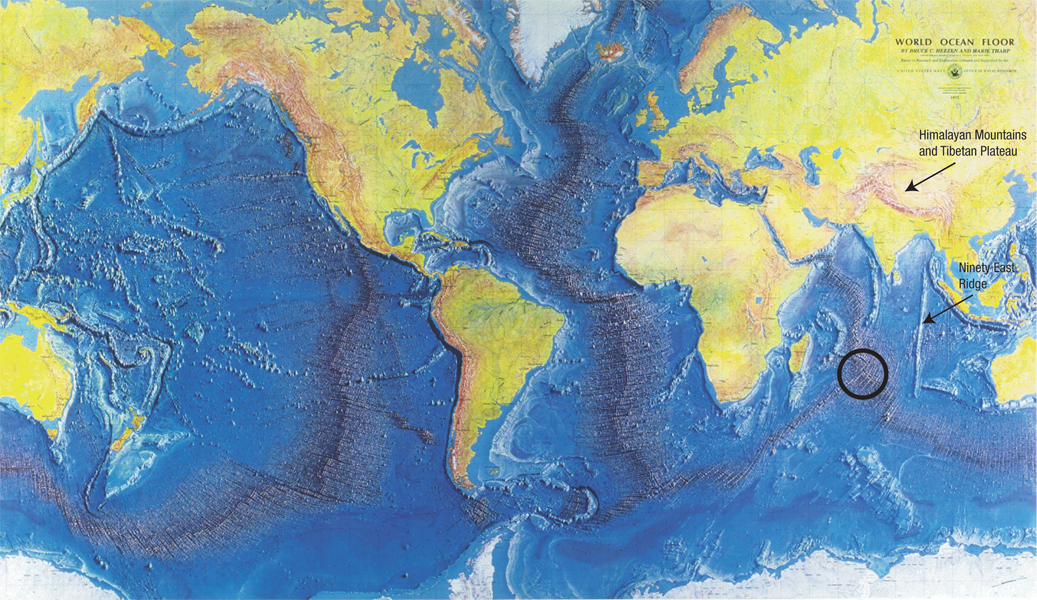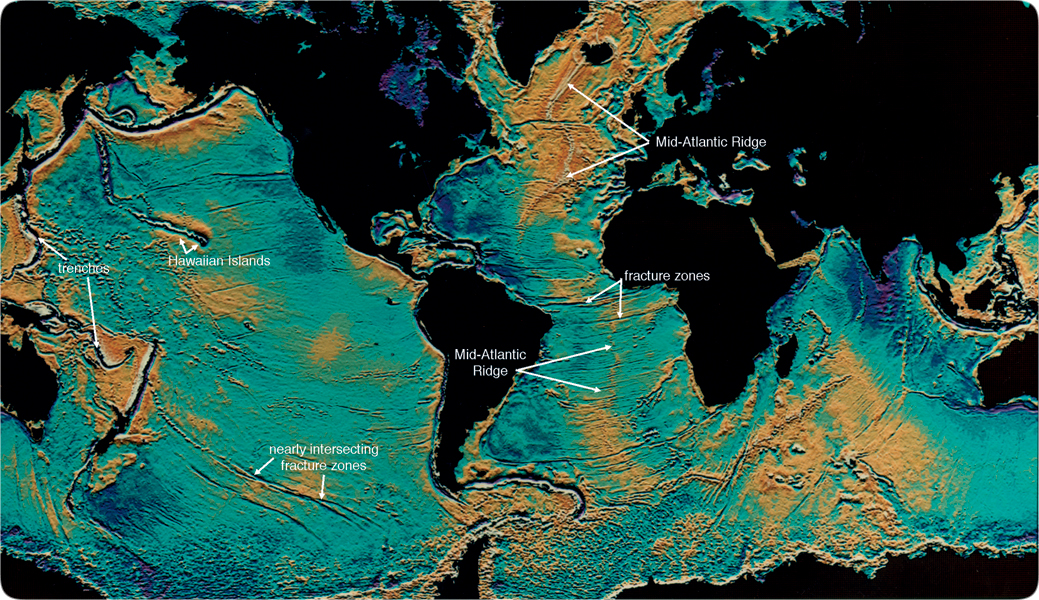Below is the online edition of In the Beginning: Compelling Evidence for Creation and the Flood,
by Dr. Walt Brown. Copyright © Center for Scientific Creation. All rights reserved.
Click here to order the hardbound 8th edition (2008) and other materials.
The Hydroplate Theory: An Overview
New evidence shows that the earth has experienced a devastating, worldwide flood, whose waters violently burst forth from under earth’s crust. Standard “textbook” explanations for many of earth’s major features are scientifically flawed. We can now explain, using well-understood phenomena, how this cataclysmic event rapidly formed so many features. These and other mysteries, listed below and briefly described in the next 11 pages, are best explained by an earthshaking event, far more catastrophic than almost anyone has imagined. Entire chapters are devoted to the italicized topics listed below.
- Mid-Oceanic Ridge
- Earth’s Major Components
- Magnetic Variations on the Ocean Floor
- Submarine Canyons
- Coal and Oil
- Methane Hydrates
- Ice Age
- Major Mountain Ranges
- Overthrusts
- Volcanoes and Lava
- Geothermal Heat
- Metamorphic Rock
- Plateaus
- The Moho and Black Smokers
- Salt Domes
- Jigsaw Fit of the Continents
- Changing Axis Tilt
Each appears to be a consequence of a sudden, unrepeatable event: a global flood whose waters erupted from interconnected, worldwide subterranean chambers with a directed energy release—focused upward—that exceeded the explosion of trillions of hydrogen bombs.1 The hydroplate theory, explained later in this chapter, will resolve all these mysteries.
But first, what is a hydroplate? Before the global flood, an ocean of water was under earth’s crust. Pressure increases in this subterranean water ruptured that crust, breaking it into plates. The escaping water flooded the earth. Because hydro means water, those crustal plates will be called hydroplates. Where and why they broke, how they moved, and hundreds of other details and evidence—all consistent with the laws of physics—explain so many of earth’s major features and constitute the hydroplate theory.
Plate tectonics, currently the most widely taught theory in the earth sciences, has many little-known problems. According to this theory, earth’s crust is composed of many plates,2 each 30–60-miles thick. They move relative to each other, about an inch per year—at the rate a fingernail grows. Continents and oceans ride on top of these plates. Some continents, such as North America, are on more than one plate. For example, different parts of North America, separated by the San Andreas Fault running up through western California, are sliding past each other. (A fault is a large fracture in the earth along which slippage has occurred.) Supposedly, material deep inside the earth is rising toward the crest of the entire Mid-Oceanic Ridge—a strange feature that wraps around the Earth like the seam of a baseball. This claimed motion, called seafloor spreading, would be similar to that of two conveyor belts rising together from under a floor and then moving along the floor in opposite directions. If plate tectonics happens on Earth, why is it not seen on other planets?3 As you will see on page 515, recently declassified data falsifies the plate tectonic theory.]
Crisis in Earth Science. The most perplexing question in the earth sciences today is barely mentioned in classrooms and textbooks: What force moves plates over the globe?
The single most difficult question that faces the theory of plate tectonics today is the same question that led to the downfall of Wegener’s [1912] theory of continental drift. ... That is, what is the mechanism that drives the plate tectonic machine?”5
The hydroplate theory gives a surprisingly simple answer that will be clear by the end of this chapter. It involves gravity, the Mid-Atlantic Ridge, Earth’s core, and water—lots of it. Be patient, and read the next 37 pages carefully.

Figure 44: World Ocean Floor by Marie Tharp. Notice the characteristic margins of each continent. Seaward from each ocean beach is a shallow, gradually sloping continental shelf, then a relatively steep drop, called the continental slope. This strange pattern is worldwide. Why? For a better look at the typical shape of this margin, see Figure 47 on page 115. Also notice the different characteristics of (1) continents and ocean basins, and (2) the Atlantic and Pacific Basins. Ninety East Ridge is so named because it lies almost exactly along 90°E longitude. Its straight, 3,000-mile length, and curious north-south orientation aimed at the Himalayas are important clues to past events on earth. (Note: As one moves toward polar regions on this type of map projection, east-west distances are stretched and do not reflect true distances.)
Why does the Mid-Oceanic Ridge intersect itself in the Indian Ocean (shown by the black circle)? The Plate tectonic theory says the seafloor is spreading at the Mid-Oceanic Ridge. So at the intersection point, spreading should be occurring in four directions—on both sides of two ridge axes. Is a deep hole opening up at that point? Obviously not!
As will be explained with many more examples in this and the next chapter, seafloor spreading is a myth. That alone falsifies plate tectonics. The hydroplate theory provides a simple explanation for that intersection point and the Mid-Oceanic Ridge. [See "Does Recently Declassified Data Falsify Plate Tectonic Theory?" on page 515.]

Figure 45: “Unlevel” Sea Level. An amazing technological development reveals details on ocean floors. In 1983, the U.S. Navy’s SEASAT satellite measured with a radar altimeter the satellite’s distance above the ocean surface with an accuracy of several inches! “Sea level” is far from level. Instead, the ocean surface “humps up” over mountains on the ocean floor and is depressed over trenches. The gravitational attraction of the Hawaiian Islands, for example, pulls the surrounding water toward it. This raises sea level there about 80 feet higher than it would be otherwise. The satellite’s data have been color coded to make this spectacular “picture” of the ocean surface. Darker areas show depressions in sea level. Notice that the ocean surface is depressed over long scars, called fracture zones, running generally perpendicular to the Mid-Oceanic Ridge. Which theory explains this—the plate tectonic theory or the hydroplate theory? Also consider the nearly intersecting fracture zones in the South Pacific. Which theory explains them?
This technique for showing features on the ocean floor has steadily improved since 1983. Today, ridges and fracture zones can be seen in places that are inconsistent with the plate tectonic interpretation. For example a crooked fracture zone can be traced from South America to Africa, and oceanic ridges are found in the Gulf of Mexico. As you will see, both are consistent with the hydroplate theory.4